Baltimore, MD Pollen and Allergy Report for Summer 2023
Pollen Allergy Trends in Baltimore, MD
When is pollen lowest in Baltimore, MD?

February
Lowest month total PPM
Avg. PPM
When is pollen highest in Baltimore, MD?

April
Highest month total PPM
Avg. PPM
How does pollen in Baltimore, MD compare to Maryland?
Baltimore has a higher average PPM than the state of Maryland.
Baltimore yearly avg PPM:
Maryland yearly avg PPM:
How does pollen in Baltimore, MD compare to the USA?
Baltimore has a higher average PPM than the USA.
Baltimore yearly avg PPM:
USA yearly avg PPM:
Is pollen worse this year in Baltimore, MD?
Spring 2023 was worse than spring 2022.
Spring 2023 PPM:
Spring 2022 PPM:
Average PPM in Baltimore, MD
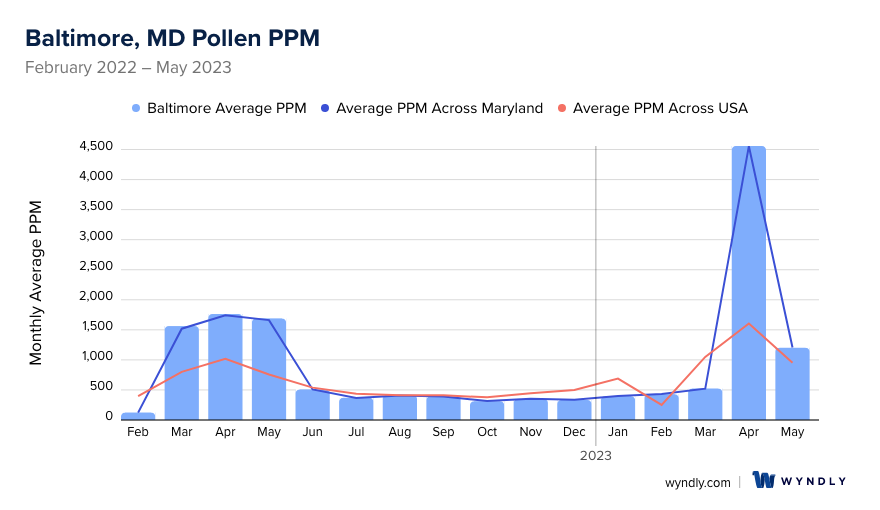
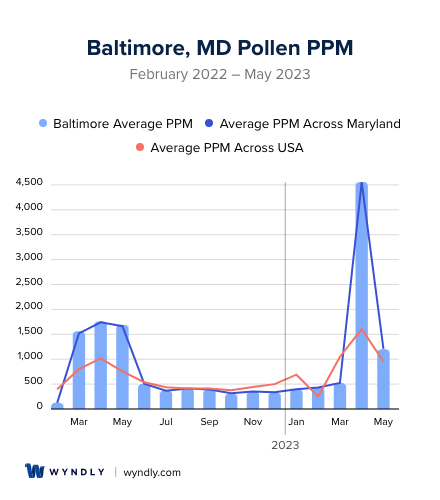
Baltimore, MD Pollen and Allergy Breakdown by Month
Grass
When is grass pollen highest in Baltimore, MD?
May has the highest grass pollen in Baltimore, MD with an average PPM of
When is grass pollen lowest in Baltimore, MD?
December has the lowest grass pollen in Baltimore, MD with an average PPM of
Tree
When is tree pollen highest in Baltimore, MD?
April has the highest tree pollen in Baltimore, MD with an average PPM of
When is tree pollen lowest in Baltimore, MD?
October has the lowest tree pollen in Baltimore, MD with an average PPM of
Weed
When is weed pollen highest in Baltimore, MD?
April has the highest weed pollen in Baltimore, MD with an average PPM of
When is weed pollen lowest in Baltimore, MD?
February has the lowest weed pollen in Baltimore, MD with an average PPM of
Baltimore, MD Pollen Monthly Breakdown by Pollen Type
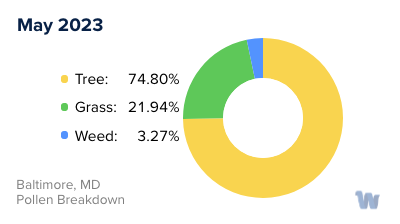
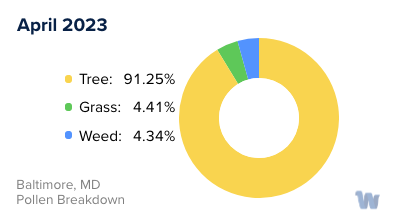
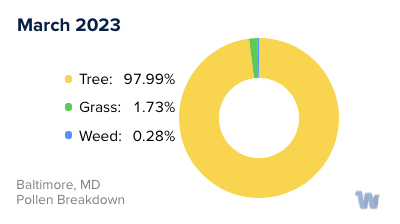
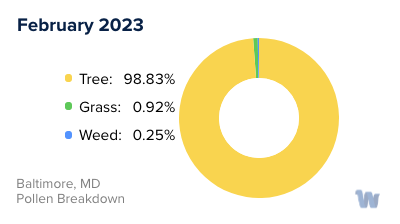
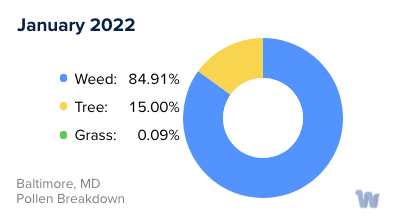
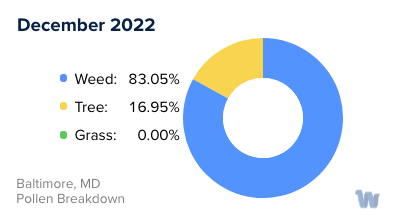
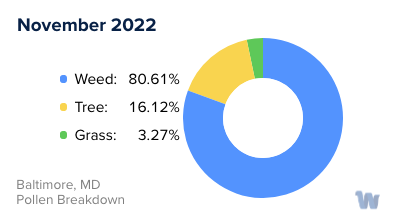
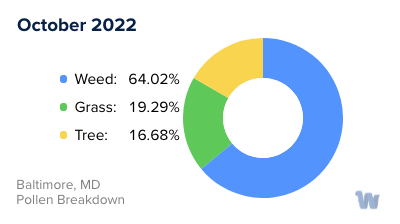
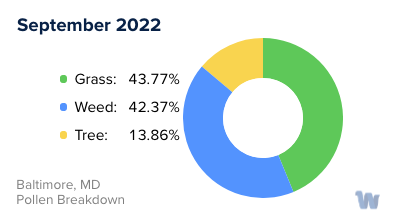
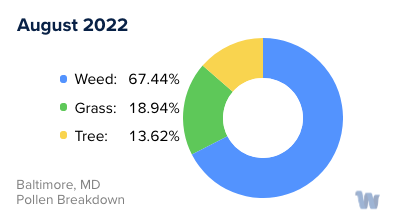
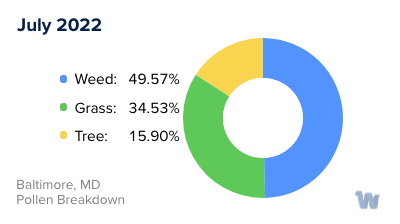
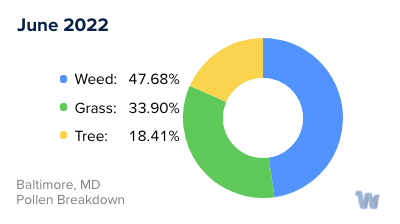
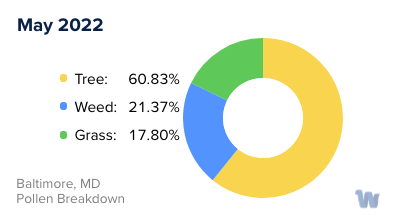
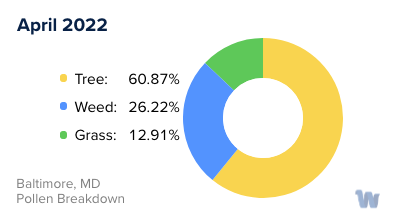
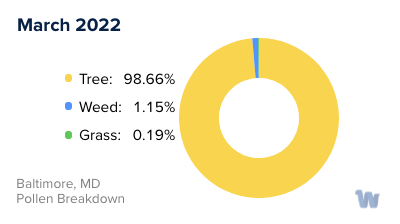
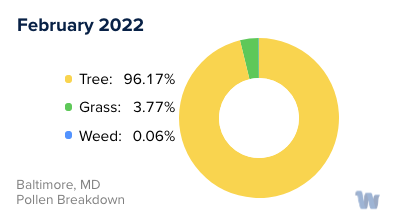
Pollen and Hay Fever in Baltimore, MD
In Baltimore, Maryland, pollen allergies, also known as hay fever, can pose challenges throughout much of the year, typically flaring up in the spring, summer, and fall. The primary sources of pollen in the area are grasses, trees, and weeds, each contributing to the overall pollen count during different seasons.
Springtime, beginning late February or early March, ushers in the tree pollen season. Among the key contributors are oaks, hickories, ashes, and maples. These trees start to release their pollen, which can trigger allergic reactions among susceptible individuals. Spring allergies can be particularly severe due to Maryland's abundant plant life.
As spring transitions to summer, the main allergenic pollen source shifts from trees to grasses. Grass pollen, primarily produced by Bermuda grass, becomes more prevalent during the summer months, causing hay fever symptoms to persist.
In the fall, weed pollen takes center stage. Weeds such as wormwood, sagebrush, orache, and amaranth release their pollen, which can lead to a late-summer to fall surge in allergy symptoms. The weed pollen season typically lasts until the first frost, usually around November. This marks the end of the major outdoor allergy season in Baltimore, giving residents a reprieve from seasonal allergies until the following spring.
Throughout the year, but especially in April, June, and September, those affected by pollen allergies should be aware of the pollen count. These are the months when seasonal allergies typically peak. Despite the challenges posed by these allergens, Baltimore's diverse flora contributes to the charm and beauty of the city, and understanding the pollen seasons can help residents and visitors anticipate and navigate the allergenic landscape.


